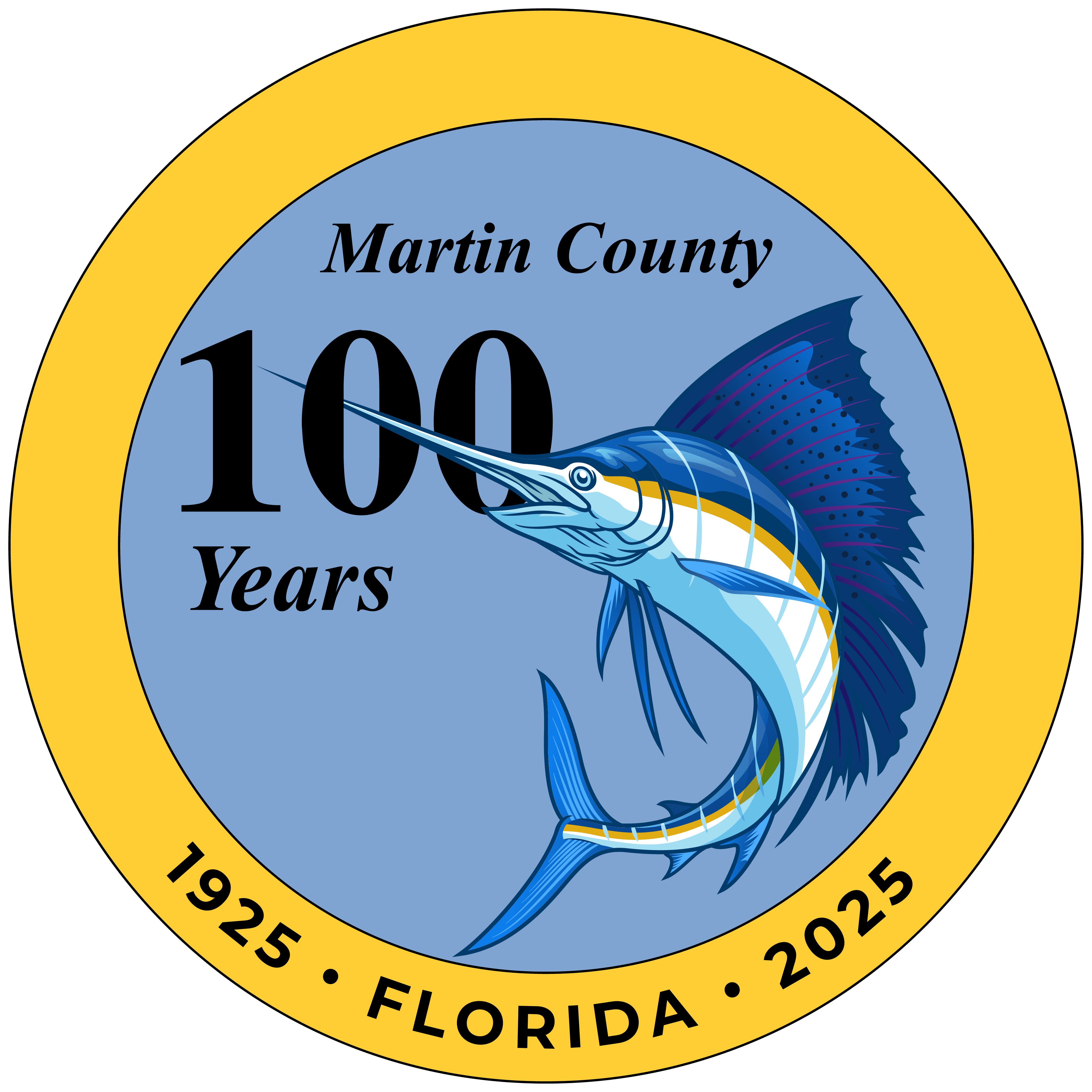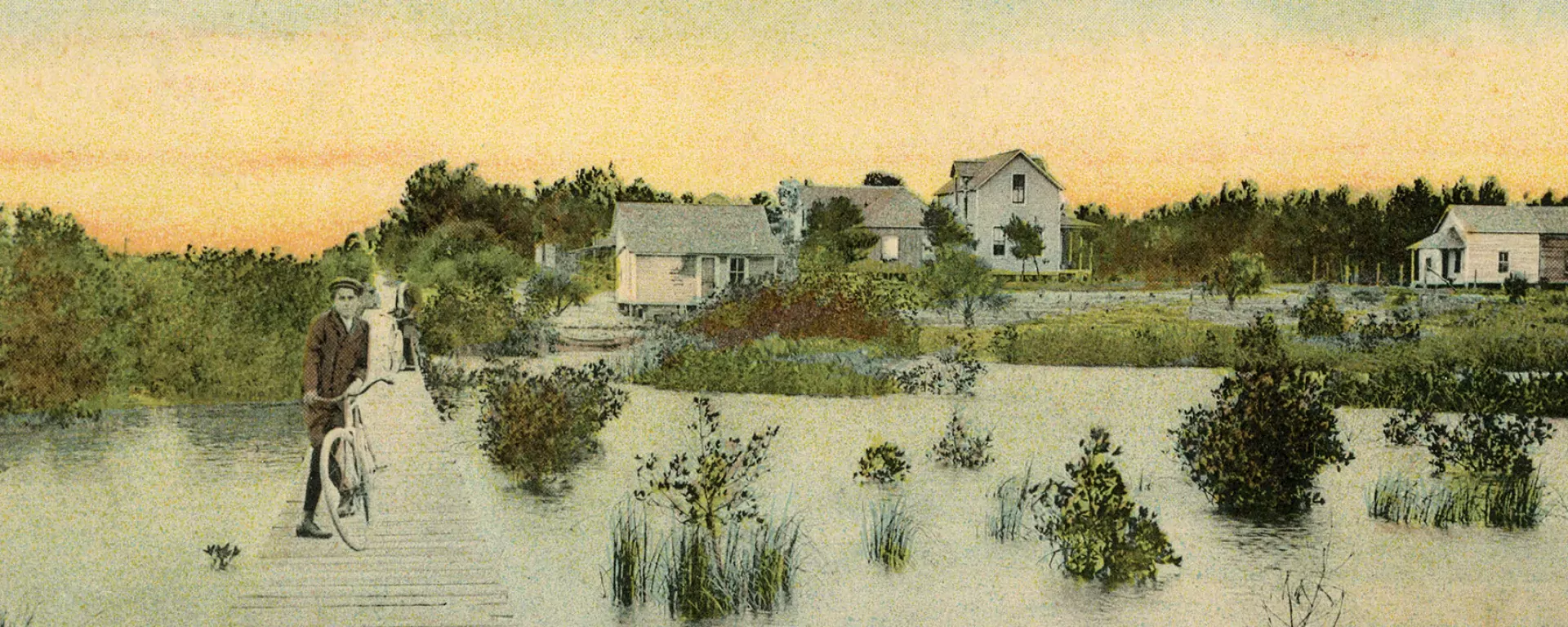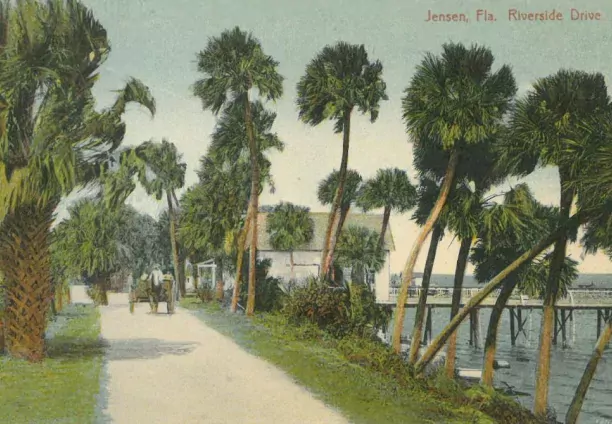Hobe Sound's rich history spans several centuries. The name "Hobe Sound" comes from the Jaega, a Native American group who originally inhabited the area. European settlers recorded the name of the Jaega's village as "Jobe" or "Jove" and Jonathan Dickinson, a survivor of a shipwreck that occurred near the town in 1696, spelled it "Hoe-bey."
In 1815, Spain granted 12,000 acres of land, including parts of what would become Hobe Sound, to Don Eusebio Gomez. In 1821, Gomez sold 8,000 acres of this land grant, including Jupiter Island, for just $1 per acre.
The area's development accelerated in the early 20th century when Henry Flagler extended his railroad through Hobe Sound. This development brought new job opportunities, spurred tourism and laid the foundation for various related industries.
In the 1920s the Olympia Improvement Corporation began an ambitious undertaking to transform Hobe Sound into a town named "Picture City," designed to attract the movie industry. They installed architectural lamp posts and named the streets after Greek and Roman gods. However, the boom collapsed with the 1928 Okeechobee hurricane and the beginning of the Great Depression in 1929, and the area reverted to its original name.
Remnants of Hobe Sound’s colorful past still echo today. Greek street names remain, cement streetlights for ”Picture City” still stand along Dixie Highway and the old Hobe Sound Train Station, originally opened in 1894, has been moved and refurbished multiple times.
The evolving nature of Hobe Sound's history was marked by cultural interactions, economic shifts and development dreams, making the area the eclectic community it is today.
Indiantown has a diverse history that began with its establishment by the Seminoles as a trading post. The area became a refuge for tribes fleeing southward following the First Seminole War, and its abundance of hunting and fishing spots made it an attractive settlement location. Later, in the 1890s, the area was settled by white American migrants.
The early 20th century brought further development to Indiantown. The arrival of Baltimore banker S. Davies Warfield in the 1920s marked the beginning of a brief period of growth. Warfield, who was the president of the Seaboard Air Line Railroad, played a significant role in the development of the town as he had planned to make Indiantown the southern headquarters of the railroad company. He laid out streets, built a school and constructed houses and a railroad station.
Warfield's death in 1927, the collapse of the Florida land boom and the devastating impact of the 1928 Okeechobee Hurricane, which nearly wiped out the area, ended what could have been a more prosperous era for Indiantown.
Despite these setbacks, Indiantown continued to exist as a rural community. It was finally incorporated as a village on December 31, 2017.
One notable landmark still standing in Indiantown is the Seminole Inn. This historic hotel was built by S. Davies Warfield. The inn was added to the National Register of Historic Places in 2006 and stands as a symbol of the town's early aspirations.
Jensen Beach evolved from the communities of Eden and Jensen, perched beside the Indian River.
In the late 1880s, Danish-born John Lawrence Jensen visited the area and was so impressed that he decided to move from West Virginia to start development of the community. In 1888, he received Homestead Settlers Rights, signed by President Grover Cleveland, for the land which became the community of Jensen.
Jensen discovered that Captain Thomas E. Richards had settled in the nearby community of Eden and was growing pineapples there, so he decided to promote pineapple farming in his area as well.
By 1894, the Florida East Coast Railway reached Jensen, significantly boosting the local economy. A year later, Jensen earned the title "Pineapple Capital of the World," shipping over one million boxes of pineapples annually during the peak months of June and July.
However, the industry faced challenges: a devastating freeze in 1895 damaged many plantations, and subsequent fires in 1908 and 1910 destroyed much of the community and its remaining pineapple farms. By 1920, the pineapple industry collapsed due to financial and agricultural issues.
The town was officially incorporated as "Jensen" in 1926, but this prosperity was short-lived as the Great Depression led to the dissolution of the town by the State of Florida in 1933. In 1943, Martin County officially changed the town's name to "Jensen Beach.”
Over time, Jensen Beach has evolved into a beloved coastal town renowned for its beautiful beaches, quaint downtown area and sense of pride deeply tied to its agricultural heritage. To this day, the pineapple remains an enduring symbol of the area's early legacy.
The history of Jupiter Island is one of development, ownership changes and conservation.
Jupiter Island's earliest inhabitants were the Ais and Seminole Indians, and the first European explorers were Spanish. In 1815, the King and Queen of Spain and the Governor of Florida awarded a land grant of about 12,000 acres to Don Eusebio Gomez, known as the "Gomez Grant." This land included the area surrounding the Loxahatchee and Indian Rivers and Jupiter Island.
In 1821, the same year Florida became a U.S. possession, Gomez sold part of his land, but the section including Jupiter Island remained unsold until 1892. It was then purchased by a group of Englishmen intending to develop a pineapple plantation.
Following a severe winter freeze in 1895 that damaged the local citrus and pineapple industries, the Indian River Association, which had purchased part of the Gomez Grant, assigned William Angas to oversee the properties. Under Angas' stewardship, a bridge and a road were constructed in 1911, making the island more accessible, and in 1916, he established The Island Inn, marking Jupiter Island's emergence as a winter colony.
The island saw further development in the 1920s, with the Olympia Improvement Corporation planning subdivisions. However, the Florida land boom collapsed in 1926, leading to changes in ownership and the eventual sale of the island's properties to a partnership including Anthony and Mary Duke Biddle.
In 1933, after a series of financial difficulties, a group led by William S. Barstow purchased the island properties. And in 1934, Joseph V. Reed acquired these properties, initiating a new era of development. By 1944, the island had 75 residents, leading to the establishment of the Jupiter Island Residents Committee and The Island Club.
In the late 20th century, the narrative of Jupiter Island shifted towards environmental preservation. In 1968, a portion of land at the island's southern end was given to The Nature Conservancy as a wildlife preserve, and in 1976, 500 acres at the north end were donated to the U.S. Department of the Interior. These actions underscored a growing commitment to preserving the island's natural beauty and ecological significance.
The island has had a fascinating journey from indigenous lands to a modern community focused on environmental preservation and respect for the land.
Palm City’s history began over a century ago and this vibrant community has evolved significantly from its early days.
The beginnings of Palm City can be traced back to August 10, 1910, when Charles Chillingsworth, a lawyer and real estate developer, purchased the land from George Beckwith for $1.91 and ¼ cents per acre. Chillingsworth played a pivotal role in developing Palm City, promoting it as a healthful land to Americans, Canadians and Europeans.
In 1912, Palm City had only one home, but it grew steadily over the years. During the Florida real estate boom of the early 1900s, Chillingsworth and his partner, Harry C. Feroe, emulated Benjamin Mumford's model of offering a house lot in the city to anyone who bought 10 acres for a farm. The duo placed nationwide advertisements touting the healthy climate, fertile soil and long growing season of Palm City. They also established a demonstration farm to showcase the agricultural possibilities of the area.
This period also saw the development of transportation infrastructure, including a ferry service and, eventually, the construction of a wooden bridge in 1919 to connect Palm City with Stuart across the South Fork of the St. Lucie River.
The city experienced both growth and challenges in the subsequent decades. Palm City began as part of Palm Beach County but became part of Martin County in 1925. Despite surviving the 1928 hurricane, the city faced financial hardships during the Florida land boom bust preceding the Great Depression, leading to its dissolution by the Legislature in 1937 due to insolvency.
The mid-20th century brought significant changes to Palm City. In 1953, the first formal subdivision was established, signaling a shift from a rural, agricultural community to a more residential one. This transformation was further propelled by the development of Florida's Turnpike in 1955, making Palm City a main entrance for travelers into Martin County. The character of Palm City continued to evolve in the 1960s, 70s and 80s, with new bridges and the development of upscale residential areas and subdivisions.
Today, Palm City is a thriving community that features nurseries, farms, industrial parks, golf courses, marinas and shopping areas.
Up until 1910, the area that would one day become Port Salerno had very few residents other than a handful of fishermen who made it their headquarters. The little fishing settlement was a flag stop on the Florida East Coast Railway, named “Alicia” in honor of Henry Flagler’s wife, Ida Alice Shourds. The name was later changed to Aberdeen.
In 1910, Benjamin Mulford, of Minneapolis, bought the southern half of the Hanson Grant property, called it St. Lucie Inlet Farms and sold 10-acre parcels plus one “city” acre, which drew families in search of land to the community, which Ben had officially renamed Mulford.
The name was subsequently changed to Salerno after being confused with Fulford, a town in the Fort Lauderdale area. The new name was chosen because many of the settlers in the area were immigrants from the Italian city of Salerno.
Frank H. Chandler moved from Minnesota to the area with his wife in 1919 and was the first mayor of the Town of Salerno when it was incorporated July 21, 1921.
The Commercial Fishermen's League was created in February 1928 and included many members from Salerno. Unfortunately, a hurricane in September of that year destroyed the local fish houses. But commercial fishing was reestablished after the storm and charter boats for sail fishing and trips to the Bahamas became popular. Shark fishing and processing was also big business in the 1930s and '40s.
In 1949, another hurricane damaged many homes and buildings in Salerno, demolishing the fish houses, boats and storage sheds, but once again the resilient commercial fishing industry recovered.
On August 11, 1959, the town's name was officially changed to Port Salerno to highlight the area as waterfront.
Today, it is still a hub for the South Florida commercial fishing industry, with a working waterfront and fishing fleet that provides fresh seafood to local restaurants and markets. Port Salerno is connected to its maritime roots, evolving from a small fishing village into a thriving center of commercial fishing.
The history of Sewall's Point is rich and multifaceted. Henry Sewall arrived with his wife in 1889, establishing his home on the riverbank and the peninsula's second post office in 1891. That same year, Charles Racey, another landowner, arrived and built a home on Mt. Elizabeth. He soon subdivided his land into ten-acre tracts, creating some of the earliest subdivisions in South Florida. The area was then part of Dade and Brevard counties, with the county line bisecting Sewall's Point.
By the turn of the 20th century, the area attracted settlers, including English immigrants who purchased land from Racey. The community, known as Waveland, was described as a colony of English living in wooden houses without servants. The first homes in Sewall's Point were made from lumber salvaged from the beach following shipwrecks.
The transformation of Sewall's Point into a town began post-1940 as the Great Depression waned. The Sewall’s Point Association formed in the early 1950s to control zoning, and the group subsequently petitioned the state legislature for a charter, which was granted on June 12, 1957. The town's first mayor, Dr. Elvin Killheffer, and his commission worked towards developing a public water system. A significant zoning decision in 1970 prevented the development of multi-family dwellings and business districts at the peninsula's southern tip, preserving the area's residential character.
Since 1970, Sewall's Point has evolved into a premier residential community in Martin County and is recognized for its desirable waterfront and non-waterfront properties.
The history of Stuart spans centuries of development and change. In the 18th century, several Spanish galleons were shipwrecked off the coast of what is now Martin County. These shipwrecks, believed to be caused by a hurricane, contained gold and silver, some of which has been recovered over time. This bounty from shipwrecks led to the region's nickname, The Treasure Coast.
Pirate activity was also notable in the area's early history. In 1832, pirate Pedro Gilbert used a sandbar off the coast to lure and scuttle unsuspecting ships. Gilbert's actions eventually led to his capture and execution, with the sandbar being named "Gilbert's Bar" on nautical charts.
The first non-Native American settlement in the area that would become Stuart was established in 1870. In 1875, the United States Lifesaving Station was built on Hutchinson Island, near Stuart. This station, now known as Gilbert's Bar House of Refuge, is listed on the National Register of Historic Places.
Initially named Potsdam by Otto Stypmann, a local landowner from Germany, the area was renamed Stuart in 1895 in honor of Homer Hine (Jack) Stuart Jr., who owned land around the railway station. The arrival of Henry Flagler's Florida East Coast Railway in the area significantly impacted its development, connecting Stuart to points further south, and facilitating the shipment of regional products like fish and pineapples.
Stuart was incorporated as a town in 1914 and later chartered as a city in 1925, becoming the county seat of the newly created Martin County. The area's reputation as a prime fishing destination led to the adoption of the slogan "Sailfish Capital of the World" in 1957, a title Stuart still holds today.
The 1930s brought the Great Depression, during which the Federal Government funded construction projects in Stuart, including the Roosevelt Bridge and the Art Deco addition to the courthouse.
World War II saw further development, with the construction of Witham Field for Navy pilot training and the establishment of Camp Murphy for the U.S. Army Signal School. The Martin County Chamber of Commerce, originally the Commercial Club, played an integral role in promoting the region, especially highlighting Stuart's reputation for sailfish.
During its history, Stuart underwent a remarkable transformation from a pirate haunt and shipwreck site to a thriving city known for its rich maritime history and robust tourism industry.


